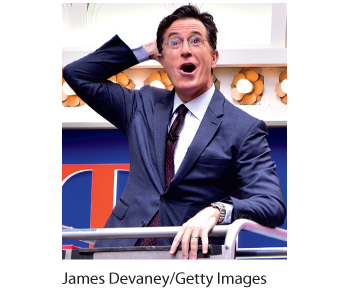Module 57 Trait Theories

Rather than focusing on unconscious forces and thwarted growth opportunities, some researchers attempt to define personality in terms of stable and enduring behavior patterns, such as Lady Gaga’s openness to new experiences and her self-discipline. This perspective can be traced in part to a remarkable meeting in 1919, when Gordon Allport, a curious 22-year-old psychology student, interviewed Sigmund Freud in Vienna. Allport soon discovered just how preoccupied the founder of psychoanalysis was with finding hidden motives, even in Allport’s own behavior during the interview. That experience ultimately led Allport to do what Freud did not do: to describe personality in terms of fundamental traits, or people’s characteristic behaviors and conscious motives (such as the curiosity that actually motivated Allport to see Freud). Meeting Freud, said Allport, “taught me that [psychoanalysis], for all its merits, may plunge too deep, and that psychologists would do well to give full recognition to manifest motives before probing the unconscious.” Allport came to define personality in terms of identifiable behavior patterns. He was concerned less with explaining individual traits than with describing them.
Like Allport, Isabel Briggs Myers (1987) and her mother, Katharine Briggs, wanted to describe important personality differences. They attempted to sort people according to Carl Jung’s personality types, based on their responses to 126 questions. The Myers-Briggs Type Indicator (MBTI), available in 20+ languages, has been taken by millions of people, mostly for counseling, leadership training, and work-team development (CPP, 2017). It offers choices, such as “Do you usually value sentiment more than logic, or value logic more than sentiment?” Then it counts the test-taker’s preferences, labels them as indicating, say, a “feeling type” or “thinking type,” and feeds them back to the person in complimentary terms. Feeling types, for example, are told they are “sympathetic, appreciative, and tactful”; thinking types are told they are “good at analyzing.” (Every type has its strengths, so everyone is affirmed.)
Most people agree with their announced MBTI type profile, which mirrors their declared preferences. They may also accept their label as a basis for being matched with work partners and tasks that supposedly suit their temperaments. But research suggests that people should not blindly accept the validity of their test results. A National Research Council report noted that despite the test’s popularity in business and career counseling, its use has outrun research on its validity as a job performance predictor: “The popularity of this instrument in the absence of proven scientific worth is troublesome” (Druckman & Bjork, 1991, p. 101; see also Pittenger, 1993). Although research on the MBTI has been accumulating since those cautionary words were expressed, the test remains mostly a counseling and coaching tool, not a research instrument.

Stephen Colbert: The extravert Trait labels such as extraversion can describe our temperament and typical behaviors.